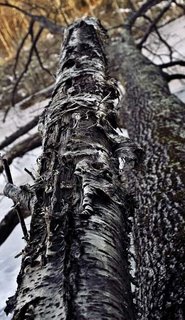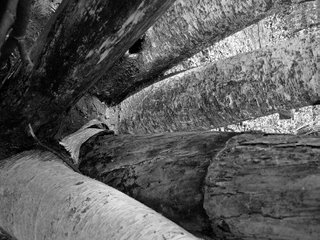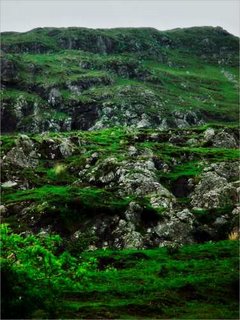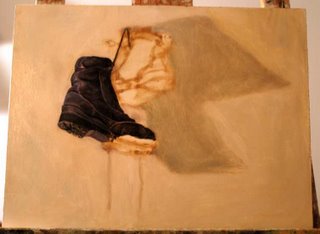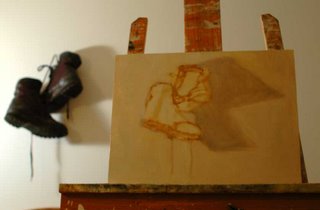Oil painting is about as dangerous as cleaning your bathtub. Both involve using a few chemicals that, with reasonable precautions, any intelligent adult can handle without hazard. Artists, however, get a little excitable sometimes and either way overstate the dangers involved or ignore them.
First, the oil in oil paint is natural and non-toxic. I've seen people on internet forums say that they are switching to acrylic because they're concerned about the toxicity of oils. That's funny, because oil is less toxic than the acrylic polymer emulsion used to bind acrylic paint. All of the different kinds of oils (linseed, walnut, poppyseed, safflower) can be found in health food stores (linseed oil is also called flax seed oil). They are edible and have a pleasant, mild odor.
Pigments are, with a few exceptions, the same from one kind of paint to another. Some of them are mildly or moderately hazardous to ingest and some of them are, basically, dirt. Cadmium colors are used in most varieties of paint, including acrylic and watercolor—they're very bad to eat. You can, if you choose, get a few pigments in oil that are particularly bad to ingest, but you have to seek those out. They include flake white, genuine vermillion, genuine Naples yellow, and lead tin yellow. However, the same resonable precautions that you should use with other paints—which I'll describe shortly—will also keep you safe if you choose to use these specialty pigments. There are also some paint additives, such as cobalt drier, black oil, Maroger's medium, and lead napthenate, that contain substances that are hazardous to consume.
I'd like to particularly mention lead, because some artists may be confused by what they see on the local TV news. The problems that arise with leaded interior house paint are not relevant to making art unless you plan to let children eat your paintings (I would strongly recommend against this). Lead is hazardous if it enters your bloodstream, but if you are careful, that’s very unlikely. It doesn’t penetrate skin. It won’t hurt you unless you eat it, breathe lead powder, rub it in your eyes, or fail to duck if someone tries to shoot you with lead bullets. Paint containing lead doesn't give off toxic fumes. Although it may be wise to avoid powdered lead pigment (as well as other hazardous pigments in powder form), prepared materials containing lead can be quite useful.
I do recommend that pregnant and nursing women have nothing to do with materials containing lead, cadmium, or mercury. That doesn't mean there is any reason to give up oil painting, just that you should avoid certain pigments.
The colorless pigments added to oil paint as extenders, such as alumina stearate or blanc fixe, are not something I'd put on my breakfast cereal, but neither are they particularly toxic. Nor are the resins or waxes a few companies include in their paint formulations.
No matter what pigments you work with, you need to make sure that you don't ingest paint. That means that you must develop safe and consistent work habits. Never put brushes in your mouth. Never touch your face or hair while painting. Don't eat, drink, or smoke while painting. Use disposable gloves if you have cuts on your hands. Make sure your workspace has good ventilation. Wash your hands (including under your fingernails) and all of your tools thoroughly after painting. Clean up your work area when you are done. And always make sure that painting materials are inaccessible to children and pets.
Solvents such as spirits of turpentine, mineral spirits, denatured alcohol, and oil of spike should be used with some care. Because they are volatile and evaporate quickly, use them in areas with good ventilation. They are potentially flammable, so don't allow open flames where solvents are being used. Some people are very sensitive to the smell of spirits of turpentine. Good quality artist's turps (I like the stuff from Winsor-Newton) are more expensive, but smell a lot better than the awful stuff you get in hardware stores. Keep any container with solvents covered when not in use—don't have jars of medium or brush washing solvent just sitting open when you paint. Instead, keep the jar closed when you're not using it and don't leave brushes sitting in solvent—it's not good for them anyway. Mineral spirits and other odorless thinners don't have a noticeable smell, but don't be careless with those, either. They can cause headaches (which you might not ascribe to a substance without a smell) and some people (including me) have skin sensitivities to them.
If you are sensitive to solvents, it is possible to use oil paint without them. You can buy a jug of cheap linseed oil and clean up with that. You can use it to wipe your brushes as well (wash with soap and water afterward). You can avoid thinning your paint, or just add a touch of oil.
One rare but potentially severe hazard with oil painting is spontaneous combustion. Drying oils, under rare circumstances, can generate enough heat when drying (oxidizing) to catch on fire. That's not a concern on the surface of a painting or in a closed container, but in a closed space that allows oxygen to enter, such as a trash bin, a pile of rags or paper towels soaked in oil or oil paint can combust. It is best to either have a fire retardent trash can, or throw rags into a container half full of water. I sometimes allow painting rags to collect in in the open on a counter. When it's time to throw them away I put them into a plastic grocery bag, soak them in water, and put them into the trash for pickup the next day.
If you are one of those rare artists who makes their own paint by working with powdered pigments, then always use a dust mask, even with pigments that are only powdered earths. You only ever get one set of lungs.
I think that's it. Use reasonable and sensible precautions, and don't worry.
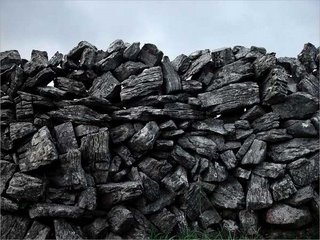 Another photo from Ireland. In many places, walls like this are all over the place. I live in New England, so I'm used to countryside that has a lot of stone walls. But the number of walls in Ireland is simply amazing.
Another photo from Ireland. In many places, walls like this are all over the place. I live in New England, so I'm used to countryside that has a lot of stone walls. But the number of walls in Ireland is simply amazing.



